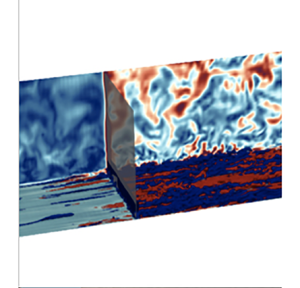No CrossRef data available.
Published online by Cambridge University Press: 07 December 2022

The flat plate transitional boundary layer response to the acceleration induced by the shock wave propagation is studied using large-eddy simulations. The steady boundary layer global behaviour is first investigated before focusing on the transient response of a turbulent region following the shock wave propagation. It is shown that the transient response of the turbulent region exhibits strong similarities with the spatial transition process to turbulence induced by free-stream turbulence, the so-called bypass transition. The boundary layer does not evolve gradually from the initial turbulence intensity to the final turbulence intensity but undergoes a temporal transition process composed of three distinct phases. These three different phases are comparable with the three stages of a bypass transition (i.e. buffeted laminar flow, transition and fully turbulent) because they are governed by the same physical processes. On the other hand, it is highlighted that this temporal response is identical to that described by He & Seddighi (J. Fluid Mech., vol. 715, 2013, pp. 60–102) during the study of an incompressible boundary layer undergoing an increase of mass flow rate. The boundary layer compression by the shock propagation does not contribute to any significant change in the turbulence dynamic after an unsteady acceleration.